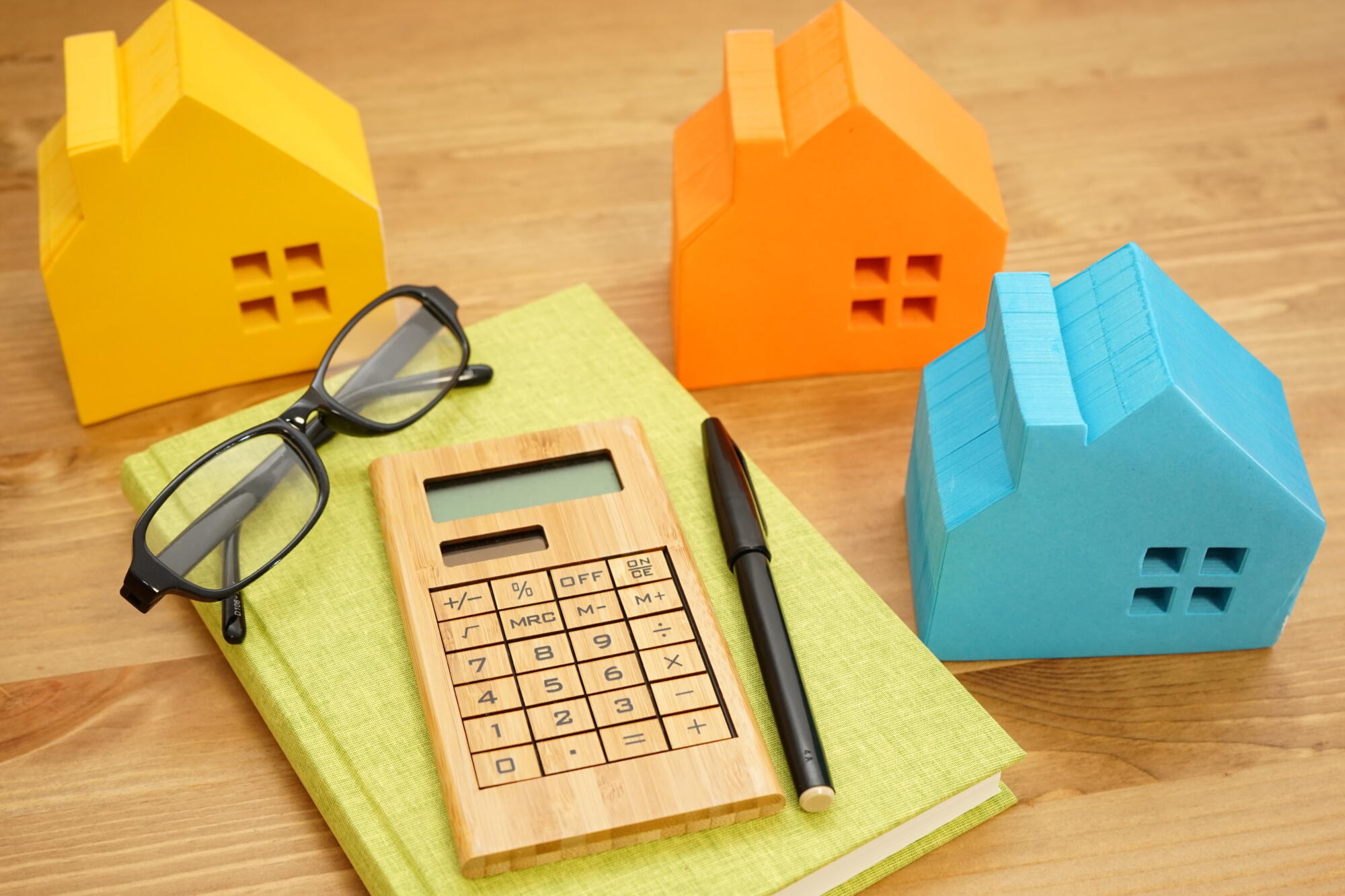Property inspections are crucial for both buyers and sellers, but they often come with their fair share of challenges. From structural concerns to hidden damages, investigation of pest infestations is essential for making informed decisions. By understanding these common issues, you can navigate the inspection process with confidence and ensure that your investment is well-protected.
Key Takeaways
- Regular property inspections are crucial for identifying potential issues and maintaining the value of your investment.
- Common exterior issues to watch out for include roof damage, deteriorating siding, and foundation cracks. Addressing these promptly can prevent further damage.
- During interior inspections, be wary of signs such as water stains, musty odors, and sagging ceilings, which may indicate underlying problems like leaks or mold.
- Water damage can be identified through discolored walls, peeling paint, or warped flooring. Prompt action is essential to prevent structural damage and mold growth.
- Keep an eye out for moisture and mold in areas prone to dampness, such as basements and bathrooms, as they can lead to health issues and property damage.
- Inspecting the attic and insulation is vital for energy efficiency and preventing issues like poor ventilation, inadequate insulation, and pest infestations.
Importance of Property Inspections
Safety Concerns
During property inspections, it’s crucial to identify potential safety hazards to ensure the well-being of occupants and visitors. This involves recognizing fire, electrical, or structural risks that may pose a danger. For example, an experienced inspector might look for faulty wiring, unstable flooring, or inadequate fire exits.
These safety concerns are paramount as they directly impact the habitability and security of the property. By addressing these building issues early on, property owners can prevent accidents and legal liabilities while creating a safe environment for everyone.
Investment Protection
Property inspections play a vital role in protecting investments by assessing the condition of the building comprehensively. Skilled inspectors can identify issues that may affect its value over time. For instance, they might uncover hidden water damage, structural weaknesses, or pest infestations that could significantly diminish the property’s worth.
By conducting thorough building inspections, investors can make informed decisions about their real estate holdings and take proactive measures to maintain or increase their properties’ values over time.
Negotiation Leverage
The findings from property inspections serve as valuable leverage during negotiations related to buying or selling properties. Understanding how identified issues can impact negotiation outcomes is essential for both buyers and sellers alike. For instance, if significant building problems are discovered during a long inspection, buyers can use this information to negotiate lower purchase prices or request necessary repairs before finalizing the deal.
On the other hand, sellers who have conducted comprehensive inspections can confidently present their properties with transparent reports and address any concerns raised by potential buyers effectively.
Common Exterior Issues
Roofing Problems
During property inspections, identifying signs of long roof damage is crucial. Look for missing shingles, potential leaks, or sagging areas. Assess the overall condition and lifespan of the roof to determine if it needs repairs or replacement.
For instance, if you notice water stains on the ceiling or walls inside the property, this could indicate a potential leak from the roof. Inspecting the attic and conducting a property inspection for any signs of water intrusion can also help in identifying roofing issues.
When examining a property’s exterior during an inspection, it’s important to recognize foundation flaws. Look for foundation cracks, settlement problems, signs of water damage during property inspection. Understanding how these issues impact a property’s stability is essential for making informed decisions about necessary repairs.
For example, visible cracks in the foundation walls may indicate structural concerns that need immediate attention. Furthermore, observing any unevenness in floors or gaps around windows and doors during property inspection can be indicative of underlying foundation problems.
Drainage Complications
Assessing drainage systems during property inspections helps identify potential issues related to water pooling and erosion. Proper functionality and efficiency are key factors to consider when evaluating drainage around a property.
For instance, standing water near the foundation of a property could lead to moisture-related issues such as mold growth and compromised structural integrity over time. Observing areas where rainwater accumulates excessively can provide insights into drainage complications that require remediation.
Recognizing common exterior issues such as roofing problems, foundation flaws, and drainage complications enables thorough evaluations during property inspections.
Interior Inspection Red Flags

Electrical Hazards
During property inspections, identifying common issues in property inspections related to electrical hazards is crucial. Outdated wiring, overloaded circuits, and faulty electrical components are red flags that need attention during a property inspection. These issues can pose serious fire hazards and compromise the safety of the property. It’s important to assess the overall safety and compliance of the electrical setup to ensure it meets current standards.
Inspectors must be vigilant when looking for signs of potential electrical hazards. For example, outdated knob-and-tube wiring or aluminum wiring may indicate a need for an upgrade to modern copper wiring due to safety concerns. Overloaded circuits can lead to overheating and increase the risk of fires during property inspection. Faulty electrical components such as damaged outlets or switches should be promptly replaced to prevent hazardous situations.
When inspecting properties, it’s essential to recognize these potential fire hazards related to electrical systems as part of ensuring a safe living environment for occupants.
Plumbing Deficiencies
Another critical aspect when identifying common issues in property inspections is assessing plumbing deficiencies within a property’s interior. Leaks, corrosion, or water pressure irregularities are clear indicators of plumbing problems that require immediate attention during an inspection. Identifying potential sewer line issues or outdated piping materials during a property inspection is essential for comprehensive assessment.
For instance, visible signs of water damage on walls or ceilings can point towards leaks in the plumbing system that need urgent repairs before they cause further structural damage. Corrosion on pipes can lead to leaks and affect water quality if left unaddressed.
Assessing the functionality and integrity of plumbing fixtures like sinks, faucets, showers/tubs, toilets is also crucial during inspections since any defects could result in inconvenience for residents and costly repairs down the line if not addressed promptly.
HVAC System Failures
The inspection process should include careful scrutiny for signs indicating HVAC system failures within a property’s interior space. Identifying malfunctions or inefficiencies in heating/cooling systems during inspections ensures optimal indoor comfort levels for future occupants while avoiding unexpected repair costs after purchase.
Inadequate heating/cooling distribution or air quality concerns must be recognized early on during an inspection so that necessary adjustments can be made prior to finalizing any real estate transactions involving the property being assessed.
Identifying Signs of Water Damage
Stains and Discoloration
When inspecting a property, it’s crucial to recognize any stains, discoloration, or water damage on the walls, ceilings, or floors. These could be indicative of potential mold growth or underlying moisture issues within the property. By identifying these signs early on, property inspectors can assess the severity and implications of visible stains and take necessary actions to address them.
In some cases, stains may indicate an ongoing leak from plumbing fixtures such as sinks or showers during property inspection. If left unattended, this could lead to more extensive water damage and compromise the structural integrity of the property. Therefore, it’s important for inspectors to thoroughly examine any areas exhibiting discoloration during their inspection process.
Inspectors during property inspection should also pay attention to any musty odors accompanying these stained areas as they can be an indication of mold growth contributing to unpleasant indoor air quality concerns.
Warped Materials
During inspections, it’s essential to keep an eye out for warped flooring, doors, cabinets, or trim within the property. Warping in materials can often be attributed to moisture damage or structural shifts occurring within the building. By recognizing signs of material warping early on in the inspection process, inspectors can identify potential underlying issues that may impact the overall condition of the property.
If left unaddressed over time,
warped materials can significantly affect not only aesthetics but also functionality and safety aspects of a property. Therefore,
assessing
the extent and impact
of warped materials is critical for understanding their implications on a property’s condition.
Musty Odors
Another key aspect when identifying common issues in property inspections is recognizing musty or mildew-like odors within a building. These odors are often indicative
Property inspections of potential moisture issues present in hidden spaces such as behind walls or under flooring. By pinpointing sources associated with these unpleasant odours during inspections, inspectors can effectively assess whether there are underlying mold or mildew problems contributing
to poor indoor air quality conditions.
Moisture and Mold Detection
Visible Mold Growth
Mold can be easily spotted during property inspections. Visible mold growth on surfaces, such as walls, ceilings, or floors, is a clear sign of moisture-related issues. It’s crucial to recognize the potential health risks associated with mold exposure. Exposure to mold can lead to various health problems like respiratory issues and allergies. When inspecting for visible mold growth, it’s important to assess the extent and severity of the infestation. This involves determining how widespread the mold is and whether it has penetrated beyond surface-level areas.
Apart from just identifying visible mold growth, inspectors should also look for signs of water damage that may not be immediately apparent but could contribute to mold growth if left unaddressed. For instance, discolored patches on walls or ceilings could indicate hidden moisture issues that might not yet have resulted in visible mold.
High Humidity Areas
Identifying high humidity areas during property inspections is essential in pinpointing potential moisture-related issues. Inspectors need to keep an eye out for places where humidity levels are consistently elevated as these areas are more prone to developing moisture problems over time. By recognizing these problem spots early on, preventive measures can be implemented before significant damage occurs.
Moreover, assessing ventilation and moisture control measures in high humidity areas is crucial for preventing future problems related to excess moisture buildup. Proper ventilation helps reduce humidity levels by promoting air circulation which aids in drying out damp spaces effectively.
Inspectors should pay attention not only to obvious high-humidity zones like bathrooms or kitchens but also less conspicuous areas such as basements or crawl spaces where inadequate ventilation can lead to persistent high humidity levels.
Attic and Insulation Concerns
Ventilation Issues
In property inspections, identifying inadequate ventilation is crucial. Look for signs such as musty odors, condensation on windows, or peeling paint. These could indicate poor air circulation and indoor air quality concerns. Check the functionality of the ventilation systems in bathrooms, kitchens, and other spaces to ensure they effectively remove excess moisture and maintain good air quality.
Assessing ventilation system effectiveness involves checking fans, ductwork, and vents for proper functioning. Ensure that exhaust fans are vented to the outside rather than into the attic to prevent moisture buildup. Inadequate ventilation can lead to a range of issues including mold growth, wood rot, and compromised indoor air quality.
Insulation Adequacy
When evaluating insulation levels during property inspections, focus on attics, walls, and crawl spaces. Inadequate insulation can result in energy inefficiency leading to increased heating or cooling costs for homeowners.
Look for signs of potential energy efficiency problems related to insufficient insulation, such as uneven temperatures throughout the house or high utility bills. Assess the type of insulation material used – whether it’s fiberglass batts or blown-in cellulose – along with its condition; damaged or compressed insulation may not provide adequate thermal resistance.
During inspections involving attics specifically: check if there’s enough insulation covering all areas evenly without gaps or compression from stored items like boxes; this ensures consistent temperature regulation within the home.
Chimney and Fireplace Safety Checks
Structural Integrity
When inspecting a property, it’s crucial to assess the structural integrity of the chimney and fireplace. Look for signs of damage such as cracks, shifts, or settlement that could compromise the building’s stability. These issues can pose serious safety hazards if left unaddressed. For example, cracks in the chimney can lead to water seepage, which weakens the structure over time.
It’s important to evaluate the overall structural stability of these features. Any compromise in their integrity could result in costly repairs or even endanger occupants’ lives. By understanding what constitutes compromised building integrity and recognizing its indicators during inspections, you can ensure a safe living environment for future occupants.
Ventilation Blockages
Another critical aspect of property inspections is identifying ventilation blockages within chimneys and fireplaces. Blocked vents for dryers, exhaust fans, or HVAC systems can lead to reduced airflow and potential fire hazards due to improper ventilation. This issue not only affects air quality but also increases the risk of carbon monoxide buildup within a property.
Inspectors should thoroughly examine these systems for any obstructions that may impede proper airflow. For instance, lint buildup in dryer vents poses a significant fire hazard if not addressed promptly. Identifying and addressing ventilation blockages during inspections is essential for maintaining a safe and healthy indoor environment.
Garage and Driveway Inspection Points
Door Mechanism Function
When inspecting the garage, it’s crucial to evaluate the door mechanism. This includes checking the hinges, latches, and locks for any signs of wear or damage. Look for misalignment or sticking when opening or closing the door. It’s important to ensure that the door operates smoothly for security and ease of use.
For example, if you notice that the garage door is difficult to open or close, this could indicate a problem with its alignment or mechanical components. Similarly, if there are visible signs of rust on the hinges or locks, it may compromise the security of the garage.
Inspectors should also pay attention to any unusual sounds when operating the garage door as they can be indicative of underlying issues with its mechanisms.
Surface Cracking
Another essential aspect of property inspections involves identifying surface cracking in various areas such as walls, ceilings, driveways, and walkways. Surface cracks can be an indication of potential structural issues within a property.
For instance, large cracks in concrete driveways could signify soil movement beneath them due to poor compaction during construction. In some cases where properties are built on expansive clay soils prone to swelling and shrinking based on moisture levels in different seasons may result in visible surface cracks on interior walls too.
It’s important for inspectors not only to identify these cracks but also assess their severity and implications. Small hairline cracks might just be superficial while larger ones could indicate more significant structural problems requiring further investigation by professionals.
Understanding the Inspection Duration
Size and Age Factors
Considering size and age-related factors is crucial. The size of a property can significantly impact its maintenance needs. For instance, a larger property may require more frequent inspections and upkeep compared to a smaller one. age plays a vital role in determining maintenance requirements. Older properties often demand more attention due to wear and tear over time.
Assessing the maintenance needs based on property size involves understanding that larger properties generally have more components that need regular checks, such as HVAC systems, electrical wiring, plumbing, and structural elements like roofs and foundations. On the other hand, smaller properties may have fewer components but still require thorough evaluation for any issues.
Moreover, when evaluating maintenance requirements based on age, older properties might have outdated infrastructure or materials that necessitate closer scrutiny during inspections. For example, an older property might have aging plumbing systems or worn-out roofing materials that could lead to potential problems if not identified early on.
Detailed Assessment Time
Allocating sufficient time for a comprehensive property inspection is paramount in identifying all existing issues or potential concerns. It’s essential to understand the importance of conducting a detailed assessment during property inspections as this allows inspectors to thoroughly evaluate every aspect of the property.
The significance of allowing adequate time for thorough evaluation during inspections cannot be overstated. Rushing through an inspection could result in overlooking critical details that may lead to costly repairs down the line. By taking ample time for each inspection, inspectors can meticulously examine every area of the property – from structural integrity to functional aspects like plumbing fixtures and electrical systems.
Furthermore, detailed assessments are imperative for identifying all issues within a property accurately. This includes scrutinizing areas such as roofing conditions (as discussed in the previous section), foundation stability, moisture intrusion points in basements or crawl spaces, insulation quality, window conditions – essentially leaving no stone unturned.
Post-Inspection Steps
Reviewing the Report
After the property inspection, reviewing the report is crucial. Take time to understand and interpret the findings effectively. Look for any potential issues that could affect your decision to purchase or proceed with a property.
Utilize the inspection findings for informed decision-making. For example, if there are significant structural concerns highlighted in the report, it’s essential to consider whether you’re willing to take on those potential repair costs.
If there are aspects of the inspection report that you don’t fully comprehend, seek clarification from the inspector or relevant professionals as needed. It’s important to have a clear understanding of all details before moving forward with any decisions related to the property.
Addressing Identified Issues
Once you’ve reviewed and understood the inspection report, it’s time to develop a plan for addressing identified issues post-inspection. Prioritize necessary repairs or maintenance based on the severity of each issue outlined in the report.
For instance, if there are minor electrical problems alongside major plumbing issues, prioritize resolving plumbing concerns first as they may pose more immediate risks or expenses.
Engage professionals such as contractors or specialized technicians to address and resolve identified property issues effectively. They can provide expert guidance and ensure that repairs or maintenance work is carried out correctly and safely.
Final Remarks
You’ve now gained valuable insights into the critical aspects of property inspections. By recognizing common exterior and interior issues, signs of water damage, and other crucial inspection points, you’re better equipped to assess properties effectively. Remember, a thorough inspection can save you from future headaches and unexpected costs. After all, it’s better to be safe than sorry when making significant investments in real estate.
So, whether you’re a homeowner, buyer, or real estate professional, don’t underestimate the importance of a comprehensive property inspection. Take the time to carefully evaluate each area and consider seeking professional assistance when needed. Your diligence today can safeguard you from potential troubles tomorrow.
Frequently Asked Questions
What are the key benefits of property inspections?
Property inspections provide crucial insights into a property’s condition, helping identify potential issues and ensuring informed decision-making. They can uncover hidden problems that may not be apparent during a casual viewing, giving buyers peace of mind.
What exterior issues should I look for during a property inspection?
During an exterior inspection, pay attention to the condition of the roof, siding, gutters, and drainage systems. Look for signs of damage or wear that could lead to costly repairs in the future. Check for any potential safety hazards such as uneven walkways or overgrown vegetation.
What red flags should I watch out for during interior inspections?
Interior red flags include structural issues like cracks in walls or ceilings, water stains indicating leaks or mold growth, faulty electrical outlets and switches, plumbing problems such as low water pressure or leaky faucets. These issues could indicate underlying problems that require attention.
How can I identify signs of water damage during a property inspection?
Look for water stains on ceilings and walls which indicate leaks; musty odors signaling mold growth; swollen wood surfaces suggesting prolonged exposure to moisture; peeling paint or wallpaper due to humidity. Identifying these signs early can help prevent extensive damage.
Why is it important to check for moisture and mold during property inspections?
Moisture and mold can cause significant structural damage and pose health risks. Detecting these issues early allows prompt remediation before they escalate into costly repairs or health concerns. It’s essential to ensure a safe living environment free from harmful contaminants.






